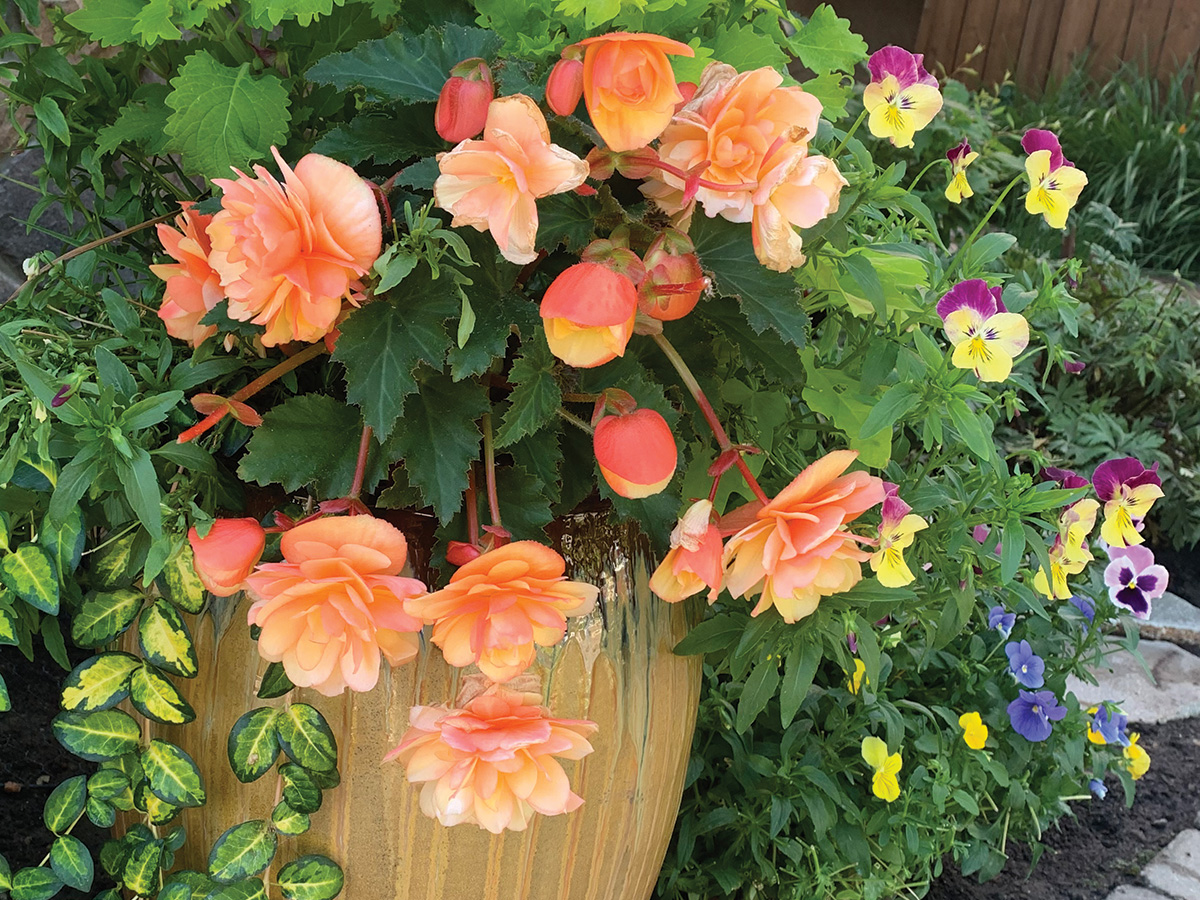Growing begonias

Photo by Deborah Maier
Do you have a dappled shade area in your garden that could use a splash of colour? Then consider growing begonias. The two most common begonias used in Calgary gardens are wax begonias (Begonia semperflorens) and tuberous begonias (Begonia × tuberhybrida Voss, also known as the Tuberhybrida Group or the Tuberosa Group).
Wax begonias are often used in garden beds. You can recognize this plant by its thick waxy leaves. They can be light or dark green to a deep burgundy colour and have clusters of small, dime-sized flowers. The plants form attractive compact mounds and are often planted in large groups for a pleasing effect. The flowers look like clam shells before opening. When they bloom, single-flowered plants have blossoms with two large petals and two tiny petals around a cluster of yellow stamens. The flowers can be white, pink, red, or orange.
The stems, leaves, and blossoms are succulent and fleshy. They can be started from seed and are best started in February because they can take a while to germinate. Fortunately, while considered a bit of an old-fashioned garden annual, they are having a resurgence in popularity and new cultivars are being bred. Many garden centres will carry wax begonias as bedding plants. They are damaged by frost so put them out after the risk of frost has passed or be prepared to cover them with a frost fabric.
Tuberous begonias are frequently used in hanging baskets and make a good shade container plant. They are known for their showy, large flowers. In addition to the colours available in wax begonias, tuberous begonia blooms can be yellow, gold, or salmon. Tuberous begonias are classified by flower form: Bicolour, Camillia, Rose, Picotee (having a different coloured blossom edge), with ruffled and serrated variations. Breeding of these hybrids started in the 1850s when tubers of parent plants were brought back to England from the forests of South America.
Sold in garden centres as tender bulbs, tuberous begonias are often available starting in March. The pendula or trailing varieties are used in hanging baskets. Like wax begonias, tuberous begonias produce blossoms all season.
There is a trick to growing tuberous begonias from bulbs. One side of the bulb is domed, and the other side has a divot—looking a bit like a thick-walled bowl. It is the rounded side that needs to be pressed into the soil. To plant, fill your pot with potting soil then press the dome side of the bulb into the mix until the top edge of the bulb is just at the top of the soil. Keep the bulb uncovered until a sprout appears and has grown to about 5 cm in height.
At this time, the bulb can be covered with soil. While waiting for the sprout, take care to keep water and soil out of the divot or the bulb may rot. Water along the edges of the pot or use the bottom watering method. Bottom watering is the practice of placing the pot being water in a dish of water and letting the capillary action of the soil draw the moisture up to the soil surface. Once the soil at the pot’s surface is moist, remove it from the watering dish.
Begonias like dappled shade but need some direct sunlight early in the morning or late in the afternoon to produce the best blooms. While begonias are zone 10 plants, they prefer cooler temperatures making them a good plant for growing in Calgary. They lag if temperatures get above 30 °C. Fortunately, while Calgary will have a few days at that temperature, the evenings usually cool down to temperatures begonias find more tolerable.
A bit of a drawback to growing them is that begonias prefer moist soils, but do not like to be overwatered. A bit of monitoring can help ensure the correct moisture balance is maintained. If you need a little colour for a shady area on a balcony, deck, or in garden, then consider planting begonias.
To learn more about gardening in the Calgary area, visit the Society’s website calhort.org.
